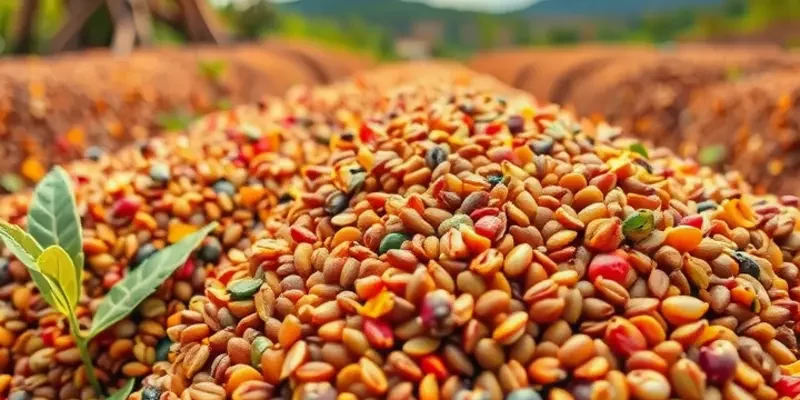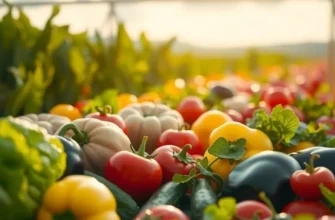Quinoa is a versatile grain packed with nutrients that can enhance any meal. By mastering how to cook quinoa properly, you can create flavorful dishes that impress family and friends alike. Whether you’re a beginner or a seasoned home cook, this guide provides straightforward, practical tips for cooking perfect, delicious quinoa every time. Let’s dive into the world of quinoa and transform this superfood into a culinary delight!
Preparing Quinoa: The Essential First Steps

Quinoa’s delicate texture and nutty flavor make it a versatile staple in kitchens worldwide. To unlock its full potential, it’s essential to prepare it correctly from the start. By mastering the fundamentals of rinsing, soaking, and cooking, you can ensure your quinoa turns out perfectly every time.
Begin with rinsing. Though quinoa seeds are small, they’re covered with saponins, a naturally occurring compound that can give them a bitter taste. Place the quinoa in a fine-mesh strainer and rinse under cold water for about two minutes. Gently rub the seeds together as the water runs over them. This simple step can make a noticeable difference in taste.
Some cooks choose to soak quinoa before cooking. Soaking can soften the seeds, reducing cooking time and aiding digestion. To soak, place quinoa in a bowl and cover it with water. Let it sit for a minimum of 15 minutes, or up to a couple of hours. Drain and rinse again before cooking.
When it comes to the key water ratio, the debate is common. For most types of quinoa, a 2:1 water-to-quinoa ratio works best. Bring the water to a boil, add the quinoa, then reduce the heat to low. Cover and let it simmer for about 15 to 20 minutes. After cooking, “fluff” the quinoa with a fork, allowing steam to escape and separate the grains.
Selecting and storing quinoa properly ensures freshness. Look for quinoa that’s free of debris and stored in airtight packaging. Opt for organic if possible, to avoid traces of pesticides. Store uncooked quinoa in a cool, dark place in an airtight container. For extended freshness, consider storing it in the refrigerator or freezer, especially in humid climates.
Understanding how to store quinoa is part of creating an eco-smart kitchen environment. Refer to tips on sustainable storage methods, which not only preserve freshness but also reduce waste (explore eco-smart kitchen storage).
Choosing the right quinoa is just the start. From white to black, each type has its unique taste and texture. White quinoa tends to be the mildest, while red and black have a deeper flavor and a slightly firmer texture.
Implement these foundational steps in your cooking routine, and your future quinoa dishes will exhibit improved flavor and texture, showcasing quinoa’s versatile potential in a delightful new light.
Flavoring Quinoa: Creative Cooking Techniques

Transforming plain quinoa into a vibrant culinary delight requires embracing its chameleon-like qualities. Once cooked, quinoa eagerly absorbs any flavors it mingles with, making it an ideal canvas for culinary creativity. Here, we explore techniques to elevate its humble profile.
Start by substituting water with broth when cooking quinoa. This single switch infuses a depth of flavor otherwise unreachable. Whether you prefer vegetable, chicken, or beef broth, each adds a savory undertone that transforms the grain. For a vegetarian twist, consider a homemade vegetable broth, full of natural, concentrated flavors. This practice is ideal when you’re aiming for minimal ingredient dinners, as outlined in our guide on minimal prep dinner ideas.
Herbs and spices are another gateway to enhancing quinoa. As the grains simmer, sprinkle your chosen spices directly into the pot. Cumin, turmeric, or smoked paprika are excellent choices, offering an aromatic allure and a pop of color. Fresh herbs, such as rosemary, thyme, or cilantro, bring a fresh, lively note. Chop them finely and stir them through the cooked quinoa just before serving to retain their vibrant taste and garnish appeal.
Incorporating vegetables not only enhances flavors but turns quinoa into a nutrient-rich bowl. Sauté colorful bell peppers, onions, and zucchini in olive oil, then mix them through the quinoa for a dish that’s a feast for the eyes and the stomach. Caramelized onions bring sweetness, while roasted garlic adds depth. Spinach or kale can be added toward the end of cooking for a boost of green goodness.
For a zestier touch, consider citrus. Lemon or lime zest and juice introduced to finished quinoa brightens the dish. The acidity balances richer ingredients for a well-rounded flavor profile. Combining this with chopped mint creates a refreshing summer salad.
Finally, consider the art of layering textures. Adding nuts such as toasted almonds or walnuts contributes a satisfying crunch. Seeds, such as pumpkin or sesame, can also be used, introducing a nuanced taste and additional texture contrast.
Next time you set out to prepare quinoa, reflect on these techniques. Whether you’re cooking for one or showcasing a colorful dish at a gathering, your quinoa will leap off the plate as a bold celebration of flavors with these enhancements.
Final words
Cooking flavorful quinoa opens a world of possibilities in your kitchen. By mastering the art of preparation and flavor enhancement, you can enjoy this nutritious grain in a variety of ways. Remember, the key is to rinse it well and experiment with different liquids and spices. With each attempt, your confidence will grow, leading to delicious and satisfying meals. Whether served as a side dish, in salads, or as part of a main course, quinoa is sure to become a staple in your culinary repertoire.







